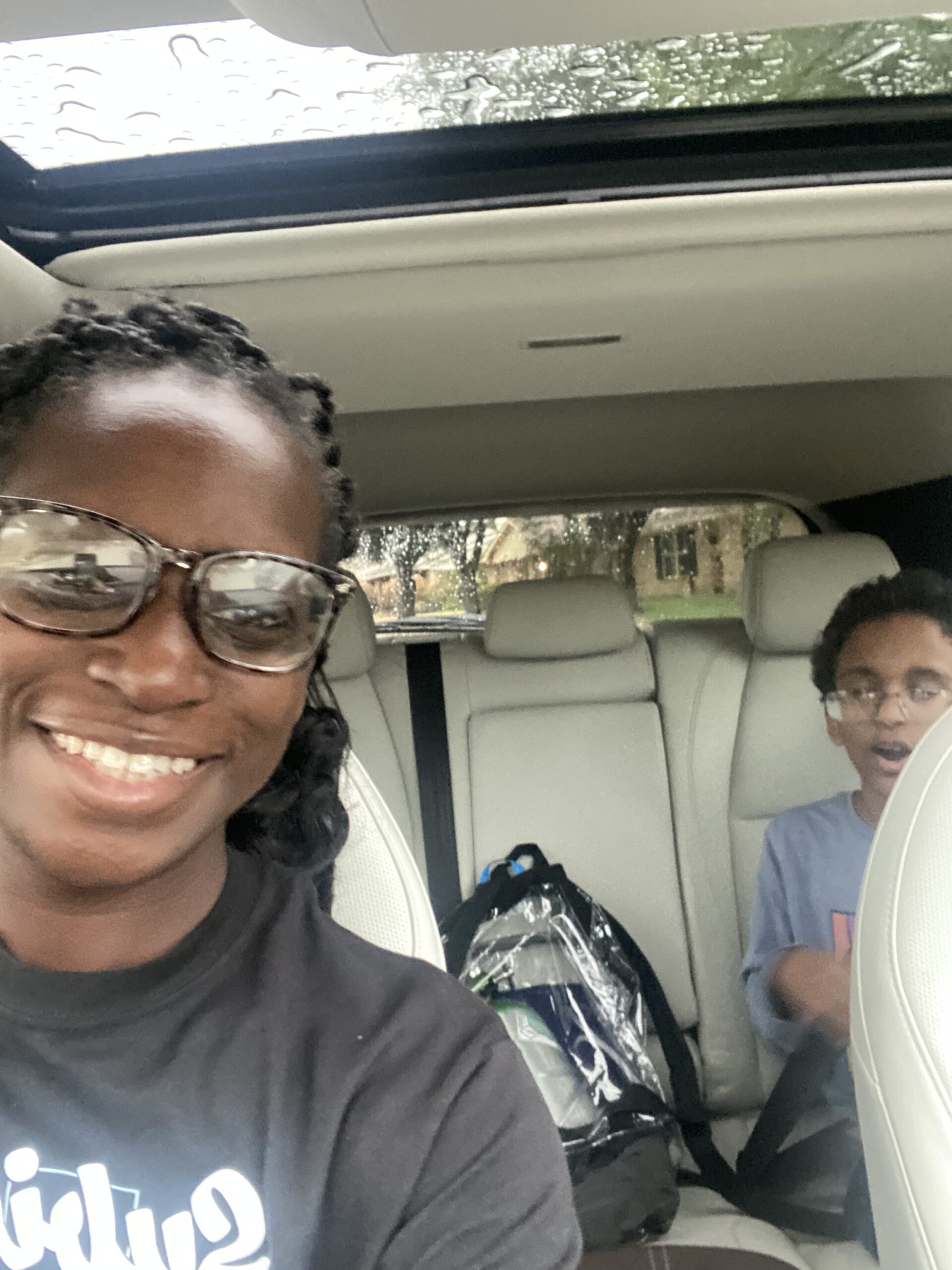Queasy tummies and the busy travel season are a potential recipe for unhappy adventures. So, when we saw that Mazda had partnered with renowned board-certified pediatrician and mom of 2, Dr. Mona Amin to talk with parents and share the scoop on alleviating and preventing carsickness we were all ears.

If you know what it feels like to travel with a child prone to motion sickness, you know how stressful planning for travel can be. And that is absolutely contrary to the plan, we like our adventures fun, easy and happy as we can swing them.
Here’s the scoop.
What did Mazda’s survey with Dr. Mona unveil?
The recent survey confirmed that 85% of those traveling with children this holiday season plan to travel by vehicle as opposed to other travel methods, like flying.
Unsurprisingly, more than 60% of parents and caregivers worry about a child getting carsick, especially when the drive includes navigating bumpy, choppy roads or rolling in continuous stop-and-go traffic.
It’s also no surprise that nearly half, actually 48%, of parents or caregivers have dealt with a carsick child before. Dr. Amin notes that the most successful remedies to address carsickness include providing access to fresh air, ensuring a child has a view of the road ahead and minimizing screen time.
According to the study, parents also noted that beyond having a queasy kid, the process of getting people in and out of the vehicle while ensuring that everyone is comfortable, regardless of where they are seated in the vehicle are stressors that impact the mental state of the driver.
What is the most common cause of carsickness in children?

For most individuals, the cause of motion sickness is likely a result of conflicting signals sent to the brain by the body’s sensory systems. The inner ear plays a significant role in motion sickness, as it detects the body’s position and movement in space. When a person is in motion, the inner ear sends signals to the brain that can conflict with other sensory signals, such as those from the eyes or skin. For example, when you’re riding in a car, your inner ear detects you are moving, but your visual system might be fixated on a book or iPad in the car. In turn, this conflict can cause the brain to become confused, leading to symptoms of motion sickness, such as nausea.
How can parents prevent their kids from getting carsick in second and third rows of SUVs? For those who are prone to carsickness, what vehicle features should passengers take advantage of?

Look at the horizon or a distant stationary object.
Fixating on an object in the distance can help the sensory mismatch by providing a frame-of-reference that allows the visual system to synchronize with the perceived motion, making the mismatch leading to nausea less likely.
As far as an in-vehicle remedy goes, the Mazda CX-90 is a three-row crossover SUV with large windows in all three rows to provide those sitting in the back, a view of the road ahead. I sat in the second and third rows and was blown away by how smooth the ride was in every seat. Mazda vehicles are designed for a planted and secure driving experience, which means a smooth ride even with stop-and-go driving or bumpy roads.
Encourage fresh air.
Opening windows or having proper ventilation can help alleviate nausea symptoms. Feeling stuffy or trapped can add to a feeling of nausea that people who are prone to carsickness can feel. The Mazda CX-90 has air vents in every row, including the third row, so all passengers can be cool and comfortable.
Avoid reading or screen time.
Screen use can increase the conflict between visual cues, which are fixed, and the body’s sense of movement. If your inner ear feels the body is moving, like in a vehicle, and your eyes are fixed on a screen or book; this can cause the sensory mismatch resulting in motion sickness. Instead; play fun car games or listen to audiobooks. The Mazda CX-90 has an incredible stereo, and some models include a Bose audio system where we bonded over Disney songs and other family favorites. The vehicle was so comfortable, and both our kids napped because of the smooth ride.

How did Mazda keep the comfort and well-being of third-row passengers in mind as it designed the 2024 Mazda CX-90?
The Mazda CX-90 keeps every family’s needs in mind while blending beautiful style and powerful performance through seating options, advanced safety and technology, and a family-friendly design.
The third-row air vents allow for a much more comfortable ride for third-row passengers. The third row is also more elevated than most third-row vehicles, and has larger windows, which means the back seat passengers can more easily see forward and out to aid with motion sickness.
I believe parents will appreciate the beautiful design, color options and driver personalization system to match preferences which adjust including seating, audio and climate controls.

Looking for some “easy” tips for holiday travel with children:
- Manage expectations. Travel can be long and tiring for everyone (including children). Have patience with them and yourselves.
- Plan for breaks every 2-3 hours or when feedings are due.
- Map out breaks if driving far; find local playgrounds to play in to get out energy.
- Utilize familiar toys, age-appropriate snacks, music and singing.
- Also remember, it’s okay if kids are bored. Constantly filling them with activities reminds them that they can’t be bored. It’s OKAY to be bored and not occupied at every given moment.
For more information on Dr. Mona Amin, visit here.
To take a closer look at the 2024 Mazda CX-90, visit here.

Leave a Reply